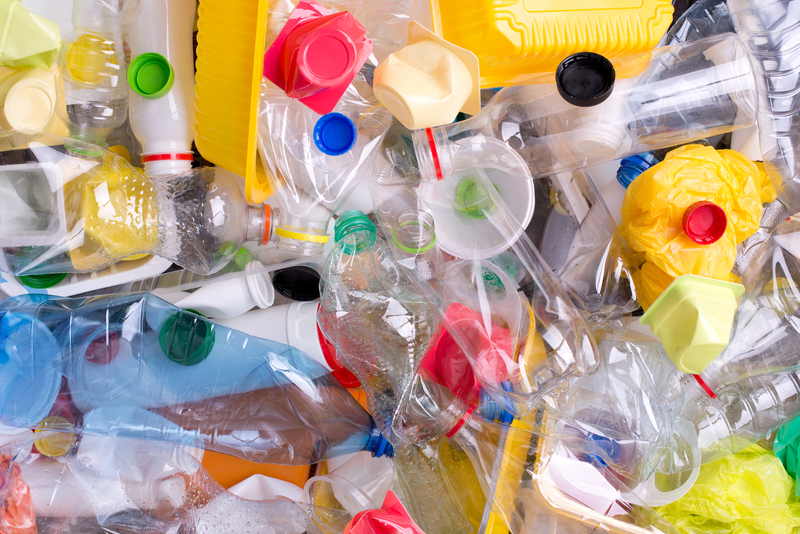Eco-Friendly Plant Pot Disposal Techniques: Sustainable Ways to Handle Your Old and Used Pots
In recent years, the growing popularity of gardening and houseplant care has left many enthusiasts wondering what to do with their old, broken, or unused plant containers. Eco-friendly plant pot disposal techniques are essential not only for environmental sustainability but also for creating greener communities. This comprehensive article will guide you through a variety of sustainable plant pot disposal methods, from recycling and upcycling to innovative reuse, ensuring you keep your ecological footprint as low as possible.
Why Proper Plant Pot Disposal Is Important
The majority of traditional plant pots are made from non-biodegradable plastics, terracotta, or ceramics. Improper disposal of these materials contributes heavily to landfill waste, environmental pollution, and the depletion of natural resources. Sustainable plant pot disposal helps minimize pollution, promotes resource conservation, and encourages creative environmental stewardship within the gardening community.
- Plastic plant pots can take up to 500 years to decompose.
- Ceramic and terracotta pots, while natural, demand high-energy production and rarely biodegrade in landfills.
- Recycling, reusing, or repurposing containers reduces demand for raw materials and keeps toxic substances out of the ecosystem.

Identifying Your Plant Pot Materials
To effectively choose the best eco-friendly disposal method for plant pots, it's crucial to understand the composition of your containers. Here's a breakdown of the most common materials and their environmental implications:
- Plastic Pots: Lightweight, usually made from polypropylene (plastic #5) or high-density polyethylene (HDPE).
- Ceramic Pots: Durable and decorative, but glazed ceramics may include non-earth-friendly chemicals.
- Terracotta Pots: Made from natural clay and generally more eco-friendly, though not biodegradable in landfill conditions.
- Biodegradable Pots: Includes pots made from peat, coir, paper, or compostable materials, designed for soil integration.
Each material requires a unique handling process for sustainable or responsible disposal.
Recycling Plant Pots: An Effective Green Solution
Recycling is one of the easiest and most effective eco-friendly plant pot disposal techniques for both plastic and certain other material containers.
How to Recycle Plastic Plant Pots
- Check Local Recycling Guidelines: Not all recycling centers accept plant pots, as some plastics, particularly if dirty or mixed, are hard to process.
- Clean Thoroughly: Remove all soil, plant residue, and labels to avoid contamination in the recycling stream.
- Locate Acceptance Points: Many nurseries, botanical gardens, or local garden centers offer collection programs for recycling pots.
- Sort by Plastic Code: Check for recycled symbols (e.g., PP #5), as only specific types may be accepted.
If recycling at a major facility isn't possible, seek out specialized plant pot recycling events often hosted during spring or fall by local gardening organizations.
Recycling Terracotta and Ceramic Pots
Most municipal recycling services do not accept ceramic or terracotta pots because they are not easily processed. However, broken ceramics can sometimes be used in construction fill, mosaic projects, or as drainage in landscaping.
Upcycling and Reusing Old Plant Pots: Creative and Sustainable Approaches
Sometimes the most sustainable plant pot disposal method is to avoid disposal altogether. Upcycling is an excellent option for extending the life cycle of your containers, reducing waste and stimulating creativity.
Innovative Upcycling Ideas
- Seedling Starters: Small pots are perfect for propagating cuttings or starting garden seeds indoors.
- Garden Organization: Use pots to organize garden tools, labels, or hoses in your shed or greenhouse.
- Decorative Displays: Paint or decorate ceramic and terracotta pots for artistic, functional garden art.
- Drip Trays: Broken pieces or shallow pots make great base trays for catching water under larger containers.
- Bird Feeders or Baths: With minor adaptations, pots can serve as eco-friendly wildlife feeders or birdbaths in your yard.
- Outdoor Lighting: Convert pots into unique lanterns or candle holders for patios and decks.
Upcycle for Community Good
Donate surplus plant pots to schools, community gardens, local plant swaps, or charity plant sales. Freecycle, neighborhood gardening groups, or online marketplaces can connect unused pots with new plant parents.
Composting Biodegradable Plant Pots
Biodegradable and compostable plant pots, made from natural materials like peat, coir, or recycled paper, offer the most straightforward environmentally-safe disposal. Composting biodegradable flower pots allows them to decompose naturally while enriching the soil.
Simple Steps to Compost Biodegradable Pots
- Read the Label: Confirm that pots are compostable or 100% biodegradable. Some "eco" plastics still require industrial composting.
- Prepare the Pot: Remove any non-biodegradable stickers or labels.
- Break Into Pieces: For faster decomposition, tear or cut the pot into small pieces before adding to your compost heap or bin.
- Mix Well: Blend into an active compost pile with other organic matter to encourage microbial activity.
- Monitor Progress: Depending on thickness and conditions, pots may fully decompose within months.
*Tip: Some biodegradable pots can be planted directly into garden beds, where roots grow through as the material degrades.
Disposing of Terracotta and Ceramic Pots Responsibly
If upcycling or donation is not an option, there are still earth-friendly disposal techniques for terracotta and ceramic planters:
- Garden Drainage: Break up old pots and use shards at the bottom of new planters to improve drainage and aeration.
- Mosaic Art: Use ceramic fragments in creative projects such as stepping stones, garden walls, or patio decorations.
- Eco-Concrete Fill: Some construction and roadwork companies accept clean broken ceramics for aggregate filler.
- Community Art Projects: Donate unique pieces to schools or art clubs for creative reuse.
Reducing Future Plant Pot Waste
While proper disposal is key, the most effective way to stay eco-friendly is to minimize your plant pot waste from the start. Here are a few strategies:
- Buy Refillable or Returnable Pots: Shop at nurseries that offer plant pot return schemes or bulk purchasing in reusable trays.
- Choose Compostable or Recycled Pots: Whenever possible, purchase plants in biodegradable containers or those made from post-consumer waste.
- Participate in Pot-Swapping Events: Local gardening clubs often host exchanges, helping to circulate existing pots and cutting demand for new ones.
- DIY Pot Making: Try your hand at making pots from newspaper, cardboard tubes, or other compostable materials for seedlings and small plants.
Adopting these habits can significantly reduce the number of pots that end up in landfills, supporting a more circular and environmentally mindful gardening culture.

The Role of Garden Centers and Manufacturers in Sustainable Pot Disposal
Businesses play a significant part in responsible plant pot disposal. Many reputable nurseries and garden centers now offer:
- Take-back programs: Customers can return empty pots for professional cleaning and reuse or recycling.
- Biodegradable pot options: More suppliers are investing in plant containers made from sustainable materials.
- Bulk tray systems: Plants are sold in shared trays or sleeves, minimizing single-use pots altogether.
Manufacturers are also exploring alternatives such as rice hulls, bamboo fiber, and even fungi-based pots for sustainable gardening. Encouraging innovation and supporting businesses that invest in eco-friendly practices benefits both consumers and the environment.
Eco-Friendly Plant Pot Disposal: Taking Action for a Greener Environment
With a little creativity, mindfulness, and community involvement, disposing of old plant containers doesn't have to harm the environment. By embracing eco-friendly plant pot disposal techniques, you can enjoy your plants while protecting our planet for future generations.
Start your sustainable gardening journey today by:- Recycling plastic pots where facilities exist
- Upcycling or donating containers when possible
- Composting biodegradable pots for soil health
- Choosing eco-friendly options at the point of purchase
Each small action counts. Whether you're a casual plant lover or a passionate gardener, let's work together to reduce plastic waste and make our homes--and our world--greener, cleaner, and more sustainable.
Summary: Sustainable Plant Pot Disposal Techniques
Eco-friendly plant pot disposal encircles recycling, upcycling, donation, composting, and conscious purchasing. By learning new habits and supporting innovative gardening solutions, we can all make a positive difference and foster eco-responsibility in our communities. Embrace these green disposal practices for a fruitful and lasting gardening experience!